What are the best home EV chargers in 2024 in Australia?
I tapped into the collective wisdom of installers in the SolarQuotes network to find out.
My questions to the installers were straightforward:
- Of all the EV chargers available in Australia, which would you choose for your home if money was tight and every dollar counted?
- Which would you pick if money was no object?
- Which EV charger brand offers the best warranty support?
Here are this year’s winners:
Every Dollar Counts: Best Value EV Chargers
Bronze: Goodwe
Goodwe clinches the bronze with their HCA charger.
Despite the lack of OCPP support in the Gen 1 models, an upgrade is on the horizon, with Gen 2 expected to launch soon. Prices are approximately $850 for the single-phase model and $1100 for the three-phase model.
Silver: MyEnergi
Snagging silver is MyEnergi’s Zappi charger, a pioneer in ‘solar only’ charging.
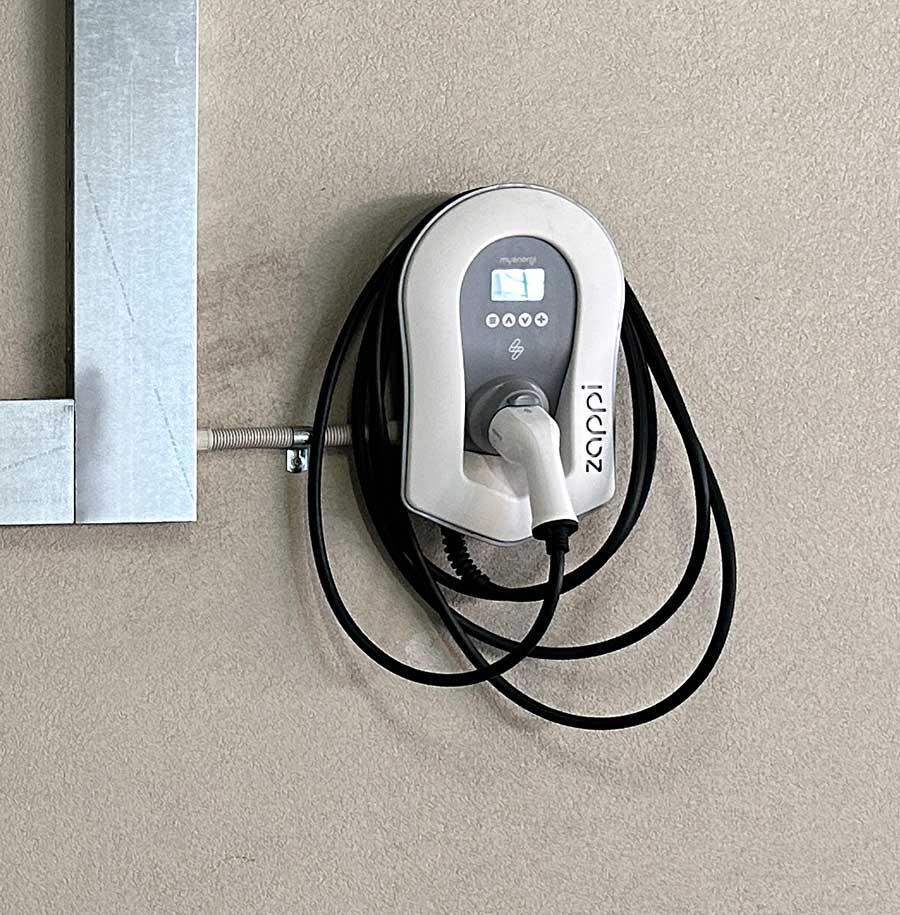
My Zappi 2.
After lagging in smart features for many years, Zappi chargers now have OCPP compatibility as standard. Pricing ranges from about $1,300 for the untethered single-phase version to $1,700 for the 3-phase tethered version, with a three-year warranty.
Gold: Tesla
The gold medal goes to Tesla, proving high quality doesn’t always come with a high price tag. Their wall connector will charge any modern EV and priced at a competitive $800 before installation.

Tesla Wall Connector in the wild with optional isolating switch.
But there’s one big caveat: if you don’t have a Tesla car and Tesla Powerwall, the Tesla Wall Connector is not capable of smart solar charging.
If you have a Tesla Wall Connector and Tesla car but no Powerwall, you can set up smart solar charging using a third party app called ChargeHQ ($7 per month subscription).
If you don’t have a Tesla car, the Tesla Wall Connector is ‘dumb charging’ only: you plug it in and it simply charges at the car’s max charge rate.
Money’s No Object: The Absolute Best EV Chargers
Bronze: Tesla
Tesla also takes home the bronze in the premium category, highlighting their high quality and hard earned reliability.
Silver: MyEnergi
Zappi earns the silver, solidifying its longstanding reputation for drivers who want to smart solar charge any brand of car without a third-party app.
Gold: Fronius
Dominating the premium category, inverter manufacturer Fronius wins gold with their Wattpilot charger.
Available in as a hard-wired or a portable option (the Wattpilot “GO”), the Wattpilot costs about $1,800before installation, and integrates natively with modern Fronius inverters. It’s a no-brainer for Fronius inverter owners who want their EV charger to match the reliability of their inverter and seamlessly integrate for smart solar charging.
Best EV Charger Tech Support
Bronze: SolarEdge
With 12.5% of the vote, SolarEdge earns bronze for EV Charger customer support.
Silver: Fronius
Fronius takes silver, further establishing its reputation for quality products and strong support in Australia.
Gold: Joint Winners – MyEnergi & Tesla
Both MyEnergi and Tesla share the gold, demonstrating a commitment to product support and customer satisfaction in Australia. That’s important when your EV charger increasingly has to integrate with your solar inverter, solar batteries, electricity tariff and may even need to coordinate with your mains supply to ‘load-balance’ and avoid tripping the main breaker.
To sum up, Fronius shines as the best premium EV charger you can buy. Although I’d only recommend it to Fronius inverter owners, who can take advantage of its native integration.
Tesla offers unbeatable value, but can only smart solar charge Tesla cars, and only if you have either a Powerwall or ChargeHQ.
Both Tesla and MyEnergi lead the pack in tech support.
For those keen to dig deeper into the specifics of these chargers, check out my comprehensive EV charger comparison table.
And if you’re in the market for solar, batteries, or EV chargers, SolarQuotes is here to connect you with trusted installers ready to meet your needs.

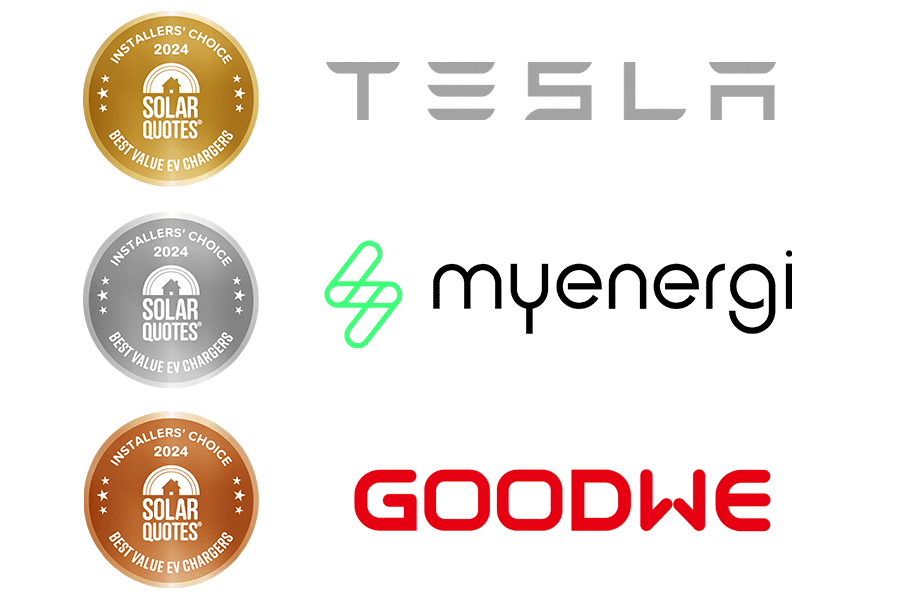
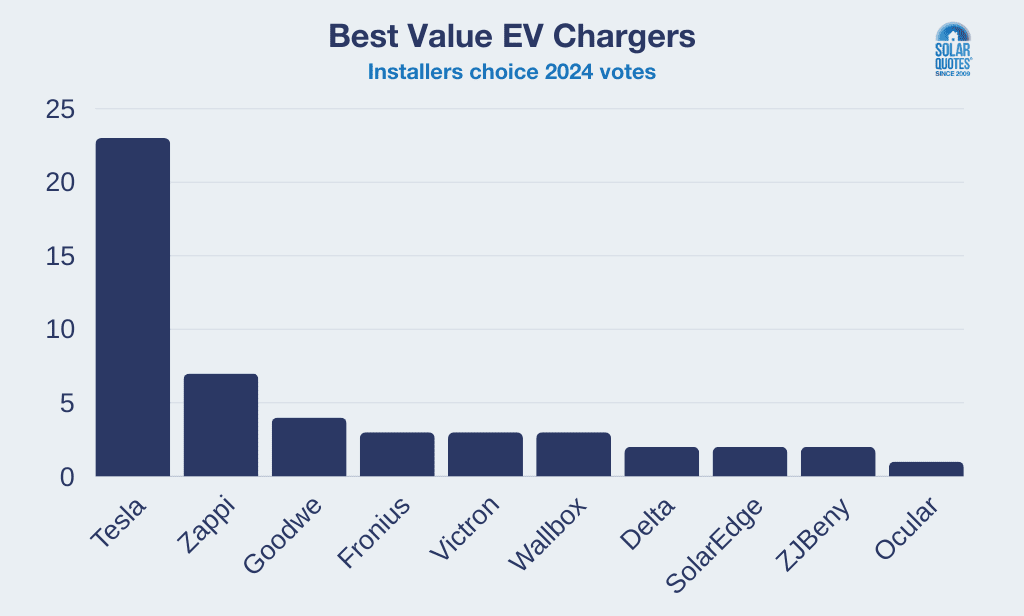


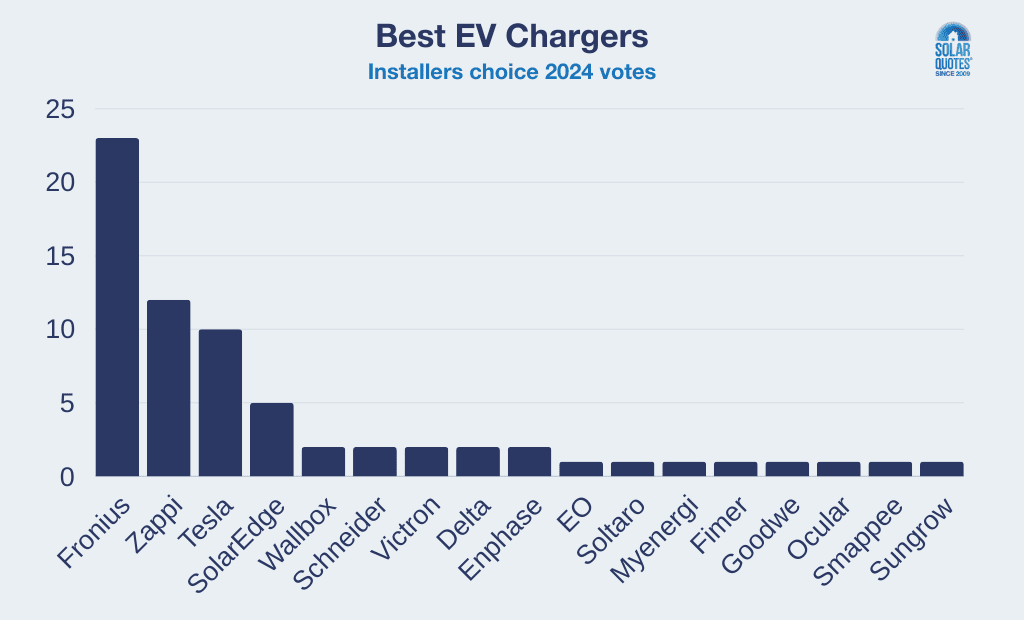
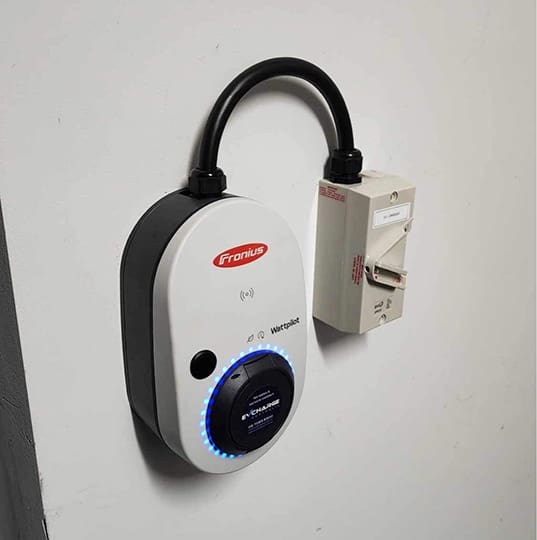
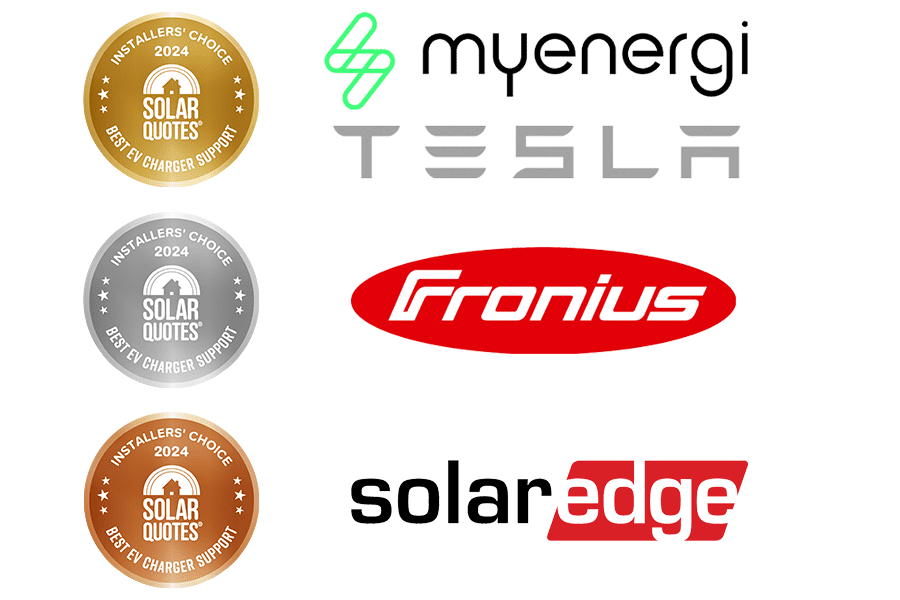
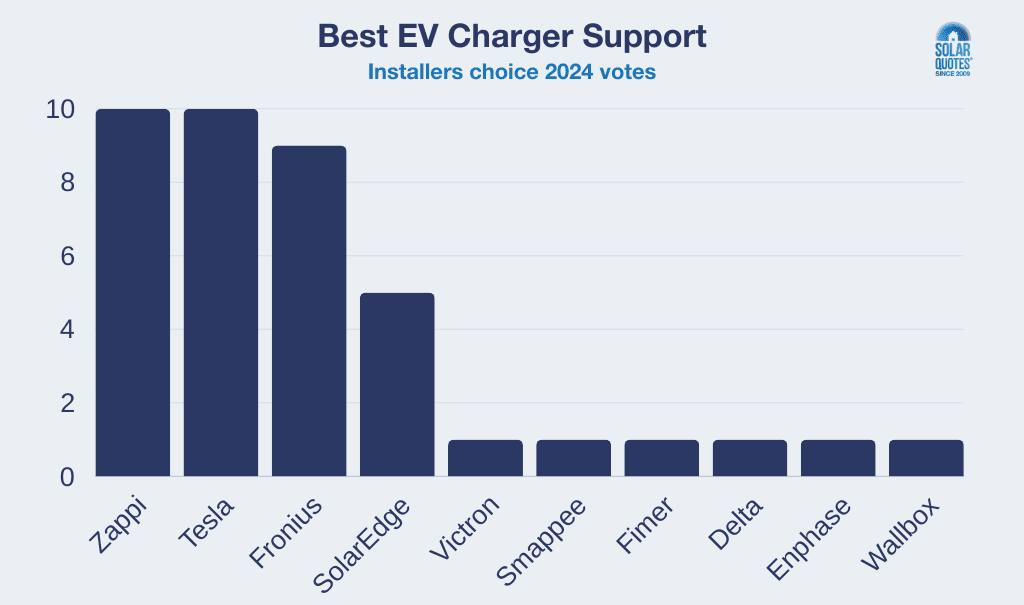
 RSS - Posts
RSS - Posts



Have you ever taken a look at EVCC? It’s a small, free piece of open source software that provides the missing link to enable solar charging on the Tesla Wall Connector 3. I’ve been using this for the past 6 months and it’s been fantastic.
It’s a little complicated to set up at first, but if you’re of a technical mind and you’re looking to save $ on your EV charging then it’s definitely worth a try.
https://evcc.io/
Much as I’ve enjoyed and appreciated the recent articles about best inverter, charger, etc… I’m no longer sure this is even the right question. It seems like we’re moving into the era of ecosystems, as you’d expect. So it would be nice to see an article comparing best ecosystem, where that includes inverter, battery and charger. If a company doesn’t provide one or more components, then they don’t qualify for the comparison, which I suspect they’ll realise pretty soon anyway.
Nigel,
agreed about the ecosystem, but it is possible to manage the full household power ecosystem with Home Assistant. This is an Open-source solution, & would be a great market for solar support in the future. (Otherwise only for people interested in learning the system) HA can read pretty much all inverters & systems, then the data read used to control loads such as EV chargers & others such as HWS, A/C & pools.
What worries me about using propriety systems is the future support & later intermixing of systems. It is great using a single solution when you buy everything together, but if one wants to stage installation it can be an issue actually sourcing compatible supported equipment (such as batteries). By using a separate control system, one has more opportunity to mix & match. In my case, I had a SolarEdge system installed many years ago, then more recently Zenaji batteries hooked to Victron inverters. I use a ZJBeny EV charger (OCPP) controlled by HA to some extent. Devices can be controlled by smart switches if required (& there is an ability to reload firmware in some switches so control is local on HA, not in a foreign country cloud.)
The Issue of EV chargers is about to get far more complicated with the ability to have Vehicle to Grid connections. This is when a control system such as HA will shine.
It is reasonable to expect that a suite of system components from one manufacturer would work together out of the box. And Victron having open source software, with a community of techy users, should be on top of that game. So that’s the path I took. Hmmmm.
After more than a month, the Victron EVSE still doesn’t appear on the Cerbo GX touchscreen system map, or as “Connected” in menus, despite charging in Manual mode. So Automatic mode, i.e. surplus solar only, is not (yet) achievable. Off-grid, that is a bit of a pain.
And yesterday the Master 8kVA Multiplus ran seriously hot supplying 9 to 11 kW loads – but the standby Slave 8kVA Multiplus didn’t kick in while I was watching. Further, a DVCC battery charging limit set at 150A didn’t stop 183A going in until I threw a couple of breakers. We also still don’t have the Multiplus backing off charging to “Float” on diminishing tail current or even Absorption timeout. That keeps the batteries at 56v, not dropping back a volt or two for a longer-life Float.
I’d asked for Fimer PV inverters, as they respond faster to throttling, but the installer insisted that Fronius communicate better with the Victrons, using comms. Well, that’s a failure too. It takes up to a minute for them to unthrottle on adding a 6 kW EV charger load or 2.2 kW of HWS, heavily loading the battery in the interim. In the end, the Fronius inverters are only delta-f throttled after all, as I understand it.
Some say “If you can’t fix it, you don’t own it.” That now applies to system config, not just the old Repair Rights dispute. They can have the last few thousand dollars _when_ commissioning is adequately completed. We’ll get there eventually, I expect.
Mind you, yesterday, in partial overcast most of the day, I managed to use 38.3 kWh of solar generation, 27 kWh into the EV, much of the rest into the HWS – just all manually managed. That’s not too shabby for off-grid, with no export opportunity.
Sounds very interesting Erik,
I’m led to believe the Victron EVSE is a bit of a beta product. One of the installers I know says it works but as soon as he selects solar charging it reverts back to standard. Victron is amazing when it works but the support is all done by installers or enthusiasts. It’s a unique business but I sometimes wonder how they operate under Australian Consumer Law without an actual phone number to ring.
I guess I’ll find out how the business model operates. The wholesaler effusively offers to sort things out, but translating the promises to effective action is lacking. If it eventually falls back to community support only, then I’ll require root access to the Cerbo, and passwords for the MPPTs and Multipluses.
I’ve heard that the first model, square with display, had issues. I have the newer rounded one which neatly serves as a cable spool. There has by now been ample time for issues to be addressed. As is, it does not perform as advertised, and I am not entirely amused, as “solar surplus only” is essential off-grid. Even though the battery did cloud-fill, when the sun returned later, 6.5 kW into the EV plus 183A (10 kW) back into the battery is a substantial load, and we’ve gone a bit beyond microcycling.
Incidentally, I haven’t had email notification of Solar Quotes follow-ups, including yours just now, for the last month or two. I took care to ensure that I’d ticked the notification follow-up box. It changed when SQ went away from the old WP follow confirmation process.
With Victron, join the Victron user group. That is where you can ask the difficult questions.
We have had a Zappi single phase charger for 4 years, 2 years charging a Nissan Leaf and last 2 years charging a Tesla Model 3.
It has been a very good charger, it works well with our 11.5kW of solar on two Fronius inverters and our 10kWh BYD LiFePO house battery plus our excellent Australian Selctronics inverter.
We charge mostly in “ECO” mode which give continuous 1.5kW charging and boosted when solar available, hardly ever need to use “Boost” mode.
ECO + plus mode is a little annoying as it stops charging when our home load exceeds solar production. So you have an indeterminate time for charging. However, if you want of put up with a possible slow charging it just uses solar.
Overall very pleased with our EV charging on the Zappi ECO mode.
The only issue with charging at 1.5Kw is the vehicle charging efficiency drops. To get to a better place on the vehicle efficiency curve, you need to charge at 10A, or about 2.2Kw+. Not sure of the Tesla curve, but it can be as much as 5% loss. Something people do not seem to take into account.
I just had a friend replace his (very early) Zappi with another Zappi because be was having problems similar to yours. Personally, I would be hassling Zappi to get a replacement charger at a mates rate price, because your charger is probably not supported for firmware upgrades now (My friends was not at a similar age)
Thanks Doug we may be moving house in next few months and planned to leave the charger for new owners. If we do decide not to move I will certainly consider your good advice.
Regards
Terry
I’ll wait with buying a more fancy one until ‘chargers’ cost what they are actually worth, which is maybe around $100. Remember, the charger is actually in the car. EVSEs are relatively simple devices and the actual investment should be in the infrastructure, like the wiring etc. If it’s a cloudy day I charge with the free 1.8 kW granny charger that comes with the car. It gives me 10km of range per hour. If it’s a sunny day and/or I need a bit more mileage I use the 3.5 kW $110 Aliexpress charger that gives me 20km range per hour. Unless I need to drive more I don’t need to charge more. Why spend more?
AliExpress cheapy charger? Is it safe? Why not just use the included granny one all the time? I am worried about a random AliExpress charger even if it’s faster.
I bought a Zappi three phase unit but found it useless on those partly cloudy days. The solution from the UK was to manually fool the system into single phase mode to charge at lower rates. The problem is that the UK don’t have much three phase and so don’t provide the resources to solve the issue. I sold the system and I’m so happy with my Tesla charger controlled by Charge HQ.
myenergi sell in Germany which is a 3 phase market.
From firmware v5.403 onwards, zappi can switch dynamically between 1 phase and 3 phase charging in ECO modes depending on the amount of surplus available
I would not recommend the Tesla charger to my worst enemy. Regardless of what claims are made to the contrary, they are a PITA for anyone who doesn’t use them exclusively for Tesla vehicles. Certainly they may be usable in a very few rare cases but why mess with something that is hopelessly inconsistent when every other EVSE in existence will happily play nice with every EV on the planet.
Sometimes there is not enough time (sunny hours) left to get to the desired SoC. That’s when doubling the rate comes in handy. Aliexpress is a trade platform. China is far ahead of us in terms of EVs. Knowing the relative simplicity of the apparatus I am not worried. Remember, it was Aussies who thought it was a good idea to put DC switches on our rooftop solar rigs.
All I want is a 22kW Dual-Port home charger as we have two 11kW-capable EVs in the household. I don’t think such a thing exists yet for residential purposes.
Great list of chargers, but I was wondering if Teison made the cut? They’re awesome for the wallet and can even work with solar panels, which is pretty neat. They kind of remind me of a mix between a Zappi and a Tesla charger. Maybe they could be included in a future updates? Just a thought!
Hi Josh,
The only Tesion I got my hands on was a single phase unit, it was dead on arrival, they gave it to me to try on a different car before sending it back.
Thanks for sharing your experience, Anthony! That’s a bummer to hear about the Teison unit. Maybe you just got a dud? I’ve heard some good things about their build quality and their customer service seems pretty responsive according to google reviews.